Speakers
Plenary Speakers
Leif Andersson
How Animal Genomic Research Contributes to Basic Biology
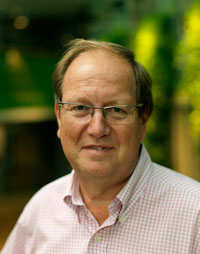
Leif Andersson is a professor at Uppsala University and at Texas A&M University, and a guest professor at the Swedish University of Agricultural Sciences. He has been working on comparative genomics using domestic animals as study objects for the last 30 years. His work has focused on domestic animals as models for phenotypic evolution and resulted in a steady stream of interesting findings on genotype-phenotype relationships. Recently, the research program has been expanded to include natural populations such as Darwin’s finches, ruff, and Atlantic herring because of the exciting opportunities opened up by the development of new sequencing technologies.
Ewan Birney
Big Data in Biology: Challenges and Opportunities
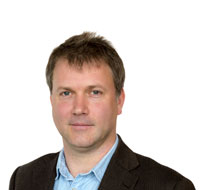
Ewan Birney is director of EMBL-EBI with Dr Rolf Apweiler, and he runs a small research group. He played a vital role in annotating the genome sequences of human, mouse, chicken and several other organisms; this work has had a profound impact on our understanding of genomic biology. He led the analysis group for the ENCODE project, which is defining functional elements in the human genome. Ewan’s main areas of research include functional genomics, assembly algorithms, statistical methods to analyse genomic information (in particular information associated with individual differences), and compression of sequence information.
Ewan completed his PhD at the Wellcome Trust Sanger Institute with Richard Durbin, and worked in the laboratories of leading scientists Adrian Krainer, Toby Gibson, and Iain Campbell. He has received a number of prestigious awards, including the 2003 Francis Crick Award from the Royal Society, the 2005 Overton Prize from the International Society for Computational Biology, and the 2005 Benjamin Franklin Award for contributions in Open Source Bioinformatics. Ewan was elected a Fellow of the Royal Society in 2014 and a Fellow of the Academy of Medical Sciences in 2015.
Ewan is a non-executive director of Genomics England, and is a consultant and advisor to a number of companies, including Oxford Nanopore Technologies and GSK.
Professor Daniel G. Bradley
Picking the Bones Out: Ancient Animal Genomics of the Fertile Crescent
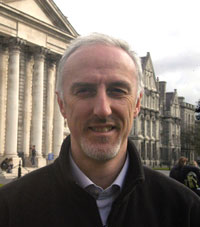
Dan Bradley spent his early years on an Irish farm and, after a degree in genetics from Cambridge University and a PhD in medical genetics from Trinity College Dublin, he started to work on most of the species held on that farm and has done for over 25 years. With his colleagues, he has combined analysis of ancient and modern cattle to inform on the origins of these and other domesticates. He has been awarded an ERC Advanced grant, with co-principal investigator Matthew Collins, to study ancient genetic variation in cattle, sheep, and goat, using bones and parchments, and more recently a Wellcome Trust Investigator award to study ancient Irish human genomes. He holds a Personal Chair in the Smurfit Institute of Genetics, Trinity College Dublin.
Dr. Diane E. Dickel
The Role of Enhancers in Mammalian Disease and Development: Stories from more than Thirty Mouse Knockouts
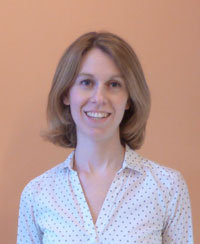
Diane Dickel is a research scientist and the department head of functional genomics at Lawrence Berkeley National Laboratory (LBNL). She has broad interests in using functional genomic technologies to study questions in human disease, evolution, development, and gene regulation. Her primary research focus is on understanding how noncoding regulatory sequence changes alter mammalian development and contribute to human disease. She has developed novel high-throughput methods to identify transcriptional enhancers and is using extensive in vivo genome engineering to elucidate the roles noncoding sequences play in vertebrate morphology, brain development, and cardiovascular disease. Before joining LBNL, she completed her PhD at the University of Washington, where she studied the genetic contributors to schizophrenia and primate evolution.
James Kijas
Filling the gap until the FAANG data comes in: Comparative annotation of sheep reveals selection has acted on the proximal regulatory machinery
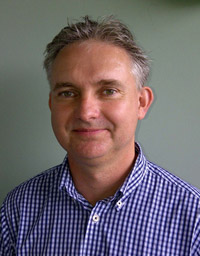
Dr. James Kijas is a genome scientist with an international reputation in the field of animal science. Following completion of his PhD in plant genetics (1996), James embarked on a research career focused on the genetics and genomics of domesticated animals. As a postdoctoral scientist guided by Professor Leif Andersson (SLU, Sweden), he identified a collection of gene mutations responsible for inherited traits in pigs and dogs. He moved to Cornell University in 2000 under the guidance of Professor Gus Aquirre, where he successfully identified the genetic basis of a number of inherited canine eye diseases and was awarded his first research grants as a principal investigator. He joined the CSIRO Division of Livestock Industries in 2003 and has been instrumental in the development and delivery of a range of genomic tools for sheep. These have included pilot-scale SNP arrays, the ovine SNP50 BeadChip and reference genome assembly. Using SNP arrays, he has completed studies into the population history and genetic diversity of sheep breeds as well as a sequence-based analysis of wild bighorn sheep populations. In the last two years, he has initiated a research program focussed on farmed Atlantic salmon, studying sex determination, diversity, and selection. He currently holds the role of research group leader in CSIRO Agriculture and is based in Brisbane, Australia.
Kerstin Lindblad-Toh
The 200 Mammals Project: A Resource for Animal and Human Health
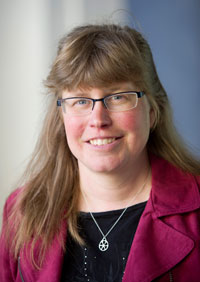
Kerstin Lindblad-Toh is active in a number of research areas including human to canine disease genetics and comparative genomics. She has led a large number of vertebrate genome projects focusing both on genome sequencing and comparative analysis, as well as tool development for trait mapping, targeted sequencing, and comparative analysis as needed for each project. She has co-led or led the mouse genome project, as well as the canine, equine, opossum, anolis lizard, stickleback, and coelacanth genome projects. She also led the 29 Mammals Project, which aimed to find the functional elements in the human genome at a 12-bp resolution. She is now working on the 200 Mammals Project, which should be powered to understand the constraint and evolutionary profile of every base in the human genome.
After an MSc in molecular biology at Stockholm University, Lindblad-Toh received a PhD at the Center for Molecular Medicine at the Karolinska Institute in 1998. After a postdoc at the MIT/Whitehead Genome Center, she went on to direct many vertebrate projects at the Broad Institute, where she is still active. In parallel, she has held a professorship at Uppsala University in Sweden since 2007 and was co-director of the Science for Life Laboratory in Sweden from 2010 to 2016. She is a professor in comparative genetics at Uppsala University and chief scientist at Broad Institute of Harvard and MIT.
Professor Pat Lonergan
Molecular Regulation of Pregnancy Establishment in Cattle
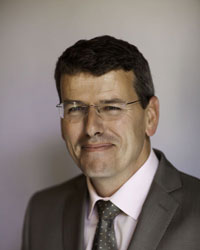
Pat Lonergan is professor of animal reproduction in the School of Agriculture and Food Science at University College Dublin (UCD), Ireland. His main areas of interest are early embryo development in vivo and in vitro, embryo-maternal communication, and understanding reasons for embryo mortality with a major focus on cattle.
Lonergan graduated from UCD with a B.Agr.Sc. in animal science (1989), an MS degree (1990), and a PhD (1992). He subsequently spent one year as a postdoctoral fellow at the Norwegian School of Veterinary Medicine followed by four years in France at the Institute National de la Recherche Agronomique (INRA) before returning to UCD as a post doc in 1997. He was appointed to the faculty as lecturer in 2001 and was subsequently promoted to senior lecturer (2005), associate professor (2006) and full professor (2009).
Lonergan has supervised numerous MS (16) and PhD (20) students to completion and currently is principal or co-supervisor of 9 PhD students. In addition, he has supervised 9 postdoctoral fellows. He has a large volume of refereed research publications (268 full-length papers, including reviews, plus 336 abstracts). This high output was recognized by the award of a D.Sc. degree (on published work) from the National University of Ireland in 2005 and his election to the Royal Irish Academy (www.ria.ie) in 2012. According to the Google Scholar, he has an h-index of 61 (https://scholar.google.com/citations?user=F4ndAdgAAAAJ&hl=en).
Professor Lonergan has acted as external examiner on 21 PhD theses in foreign universities. He has served on the board of governors of the International Embryo Transfer Society and European Embryo Transfer Association and was elected president of IETS in 2009. He currently serves as associate editor on the editorial boards of the journals Biology of Reproduction and Reproduction, Fertility, and Development. He was appointed Associate of the European College of Animal Reproduction (2016; http://www.ecarcollege.org).
Professor Julian Marchesi
Is it Time to Change the Paradigm? Mammals Are Not Just Genes Interacting with their Environment
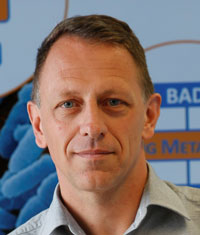
Professor Marchesi graduated from Cardiff University with a PhD in biochemistry (1992) and became interested in the role bacteria play in ecosystem function. During his postdoctoral years, he developed an interest in the contribution of uncultured microbes to the maintenance and function of ecosystems (i.e., molecular microbial ecology). He subsequently secured a Wellcome Trust Fellowship, which extended his molecular microbial ecology interest and investigated, with culture independent methods, the diversity and distribution of genes involved in biodegradation of priority pollutants in pristine environments. After a short time investigating the deep biosphere, he obtained a lectureship (2001) in the Department of Microbiology, University College Cork, Ireland (UCC) where he transferred those “omic” skills into the human gut and started to investigate the human gut ecosystem in health and disease. After 7 years in UCC, he moved back to Cardiff University in 2008 to a senior lectureship, where he started investigating the role of the gut microbiome in maintaining host health and initiating diseases, not only of the gut but throughout the host system. In 2013, he was promoted to Reader and took a half-time readership in Digestive Health at Imperial College London. This work uses a variety of “omic” approaches such as metagenomics, metatranscriptomics, metabonomics, organoid culture, and molecular ecology. In 2015 and 2016, he was promoted to professor of human microbiome research at Cardiff University and professor of clinical microbiome research at Imperial College London, respectively. His focus is on how the microbiome influences the initiation of gut diseases, such as IBD and cancer, and how it drives and supports disease progression and therapies. He is currently using a variety of “omic” approaches to investigate these questions at both Imperial College London and Cardiff University. Notable achievements include the first publication on the colorectal cancer microbiome and the realisation that the microbiome is different on, compared with off, the tumour and this may be used to diagnose the tumour’s development.
Toni Reverter
GBLUPs Me, GBLUPs Me Not: Marrying Molecular Biology and Statistical Genomics
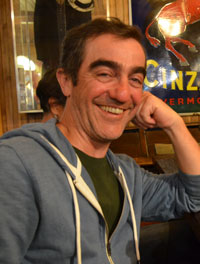
After graduating with a BSc in veterinary sciences from the Universitat Autònoma de Barcelona, Spain, Toni Reverter was awarded an INIA/USDA PhD scholarship and enrolled at Colorado State University in 1990 to pursue a double degree of MS in statistics (linear models) and a PhD in animal sciences (quantitative genetics). In 1995, Toni joined the Animal Genetics and Breeding Unit (AGBU) at the University of New England in Armidale, Australia. Since 2002, Toni has been based in Brisbane with CSIRO Agriculture and Food, where he is now a senior principal research scientist and research team leader of computational and systems biology.
His team boasts skills in statistical, quantitative, and molecular genetics, RNA expression analysis, genome assembly, next-generation sequencing, whole-genome association studies, and gene network inference. In addition to being physically embedded with the molecular biologists, Reverter’s team is well acquainted with the latest computer infrastructures, including GPU-enabled desktops, multi-screen visualization systems, and cluster computers hosted at the CSIRO high-performance super-computer facility.
Dr. Matthew Teasdale
Sheep parchment as a genetic resource
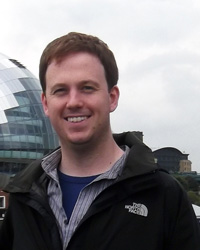
After graduating with a bachelor’s of science in human genetics and a master of research in bioinformatics from Newcastle University, Matthew Teasdale moved to Trinity College Dublin to complete a doctoral degree in genetics as part of the Marie Curie initial training network “LeCHE” under the supervision of Professor Dan Bradley. During his doctoral research, Matthew developed a keen interest in palaeogenomics, which he has advanced through his postdoctoral research as part of the ERC-funded “CodeX” project that aims to describe ancient genetic variation in cattle, sheep, and goats. During this time, Matthew developed methods to enable the extraction and high-throughput sequencing of DNA from manuscript parchment and archaeological leathers, two time capsules of genetic data.
Dr. Alison Van Eenennaam
Will Animal Genetics Innovations Be Embraced or Eschewed? The #Scicomm Challenge Facing Agricultural Biotechnology
Click here to view a PDF of Dr. Van Eenennaam's presentation at the ISAG meeting
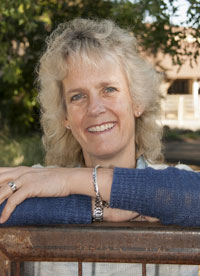
Dr. Alison Van Eenennaam is a cooperative extension specialist in the field of animal genomics and biotechnology in the Department of Animal Science at University of California, Davis (UC Davis). She received a bachelor’s degree in agricultural science from the University of Melbourne in Australia, and an MS in animal science and a PhD in genetics from UC Davis. Her publicly funded research and outreach program focuses on the use of animal genomics and biotechnology in livestock production systems. Her current research projects include the development of genomic approaches to select for cattle that are less susceptible to disease, the development of genome editing approaches for livestock, and applied uses of DNA-based information on commercial beef cattle operations. She has given over 450 invited presentations to audiences globally and uses a variety of media to inform lay audiences about science and technology. She frequently provides a credentialed voice on controversial topics, including cloning and genetically engineered plants and animals. Dr. Van Eenennaam was the recipient of the 2014 Council for Agricultural Science and Technology (CAST) Borlaug Communication Award, and the 2016 Beef Improvement Association (BIF) Continuing Service Award.
Tad Sonstegard
Presentation Title: Cut and Paste Genetic Improvement: Changing Direction and Selection with Advanced Breeding Methods
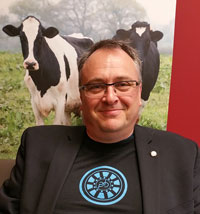
Tad Sonstegard is currently chief scientific officer of Acceligen, a food animal genetics subsidiary of Recombinetics, where he leads both business development and research efforts dedicated to global livestock improvement. Previously, he led a livestock genomics research program at the USDA Agricultural Research Service (Beltsville, MD) that delivered many applications in germplasm conservation and genetic improvement for livestock, including the first commercially successful, ag-based SNP tool. He identified causative variation affecting fertility and thermo-tolerance in cattle and has led consortia to generate genome assemblies of the water buffalo, goat, and Zebu cattle, and an expression atlas of cattle. Sonstegard received his undergraduate degree from Iowa State University and his PhD from the University of Minnesota. He has published 183 peer-reviewed articles and has received award recognition for his work in genomic research for livestock genetic improvement.
Invited Workshop Speakers
Flavio V. Meirelles
Ruminant Genetics and Genomics: Cytoplasmic inheritance on farm animals and biotechnologies for selection
Eva-Maria Geigl
Companion Animal Genetics and Genomics: Early events of cat domestication uncovered through ancient mitochondrial DNA analysis
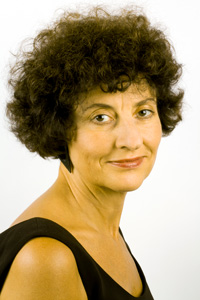
Eva-Maria Geigl is interested in the study of genome evolution using ancient samples. These samples are direct witnesses of the course of evolution. A particularly interesting model for genome evolution is the domestication process. With her team, she studies these processes over the last ~10,000 years in several animal species. To identify the most informative and best-preserved samples and to obtain a baseline to which to compare the genomes during the domestication process, the team characterizes the structure of the ancestral populations before the onset as well as contemporaneous to the domestication process. Moreover, to discriminate human- and climate-driven aspects of the evolution of species, the team also studies wild, nondomesticated sister species of domesticates.
Eva-Maria Geigl graduated with a state diploma in chemistry and biology and a PhD in molecular genetics from Ludwigs-Maximilian University of Munich, Germany. During her postdoctoral work at of the Stanford University Medical Center, she was involved in the Human Genome Project focusing on the physical mapping of chromosomes and the analysis of endogenous retroviral sequences. She then joined the Jacques Monod Institute in Paris where she investigated the architecture and evolution of human chromosomes. Later she became interested in using the palaeogenetic approach to study the evolution of genomes and species and developed projects in this area. She set up the core facility of Palaeogenomics and Molecular Taphonomy of the Jacques Monod Institute in Paris, where she is also running a research group as a research director at the French National Research Center CNRS. The main research lines of her group are the study of the evolution of genomes in the context of human evolution and the domestication of animals, phylogenetic and phylogeographic study of extinct and endangered animals, evolution of pathogens, methodological development in palaeogenetics and palaeogenomics, and taphonomic approaches to better understand DNA preservation.
Charles Danko
Horse Genetics and Genomics: Mapping transcriptional regulation at multiple layers using ChRO-seq
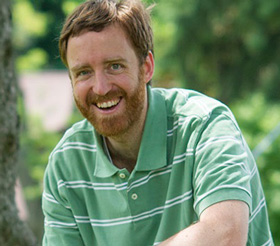
Charles Danko is an assistant professor at Cornell University known for his work on the kinetics and regulation of gene transcription. Danko received a BS in biomedical engineering from Johns Hopkins in 2003 and a PhD from the State University of New York in 2009. Danko joined the faculty at Cornell University in 2014, with joint appointments at the Baker Institute for Animal Health and the College of Veterinary Medicine. The Danko laboratory studies how DNA sequences encode patterns of gene regulation, and how these “regulatory codes” contribute to evolution, development, and disease. Danko has a longstanding interest in using nascent transcription as a rich source of information about multiple layers of mammalian genome function. The laboratory has recently advanced this work by developing a new experimental assay called chromatin run-on and sequencing (ChRO-seq) that can be applied broadly in any cell or tissue sample. To complement this novel method, Danko has developed machine-learning methods to interpret patterns of nascent transcription and to integrate this novel source of genomic data with other molecular genomic assays. He lives in Ithaca, New York, with his wife and daughter.
Ludovic Orlando
ISAG-FAO Advisory Group on Animal Genetic Diversity: An ancient genomic perspective on the horse domestication process
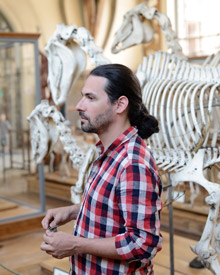
Picture Copyright: Nicola Le Calzo
Ludovic Orlando received his PhD in molecular genetics from the University of Lyon, France, twenty years after the first ancient DNA molecule was ever sequenced. He is a professor of molecular archaeology at the Centre for GeoGenetics, Natural History Museum of Denmark, Copenhagen, and a CNRS Research Director at University of Toulouse, France. His lab has a strong focus on the development of integrative approaches for studying ancient DNA molecules, promoting the field of palaeomics by the merger of biochemistry, molecular biology, genomics, and computational biology. The methods developed led to the characterization of the oldest genome sequenced to date and the description of the first genome-scale epigenetic maps from ancient individuals. Current research in his lab is primarily carried out within the framework of his ERC-funded PEGASUS project, aiming at identifying the changes introduced in the genome, epigenome, and oral microbiome of the horse since it was first domesticated, some 5,500 years ago.
Søren Buus
Comparative MHC: Large-scale analysis of the specificities of livestock MHC class I and II molecules
Keji Zhao
Animal Epigenetics: Dynamics of 4D Nucleome during differentiation of mouse hematopoietic stem cells
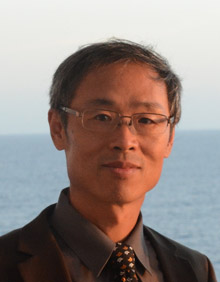
Keji Zhao, PhD, is a senior investigator and director of the Systems Biology Center, at the National Heart, Lung, and Blood Institute (NHLBI), part of the National Institutes of Health (NIH). Dr. Zhao joined NHLBI in 1999 and has been a senior investigator since 2007.
Dr. Zhao’s research focuses on the epigenetic regulation of cell differentiation and cell memory. His laboratory developed the ChIP-SAGE, ChIP-Seq, MNase-Seq, and single-cell DNase-seq (scDNase-seq) techniques. By applying these techniques, his lab reported the histone methylome (2007), the acetylome (2008), and the genome-wide nucleosome map (2008) of human cells. His laboratory also found that histone deacetylases (HDACs), the previously known co-repressors of transcription, are highly enriched in active genes; at the same time, histone acetylases (HATs) co-bind with HDACs to inactive genes to prepare them for future activation in response to environmental stimuli.
Dr. Zhao received his undergraduate degree from Changwei Normal College in Weifang, China, in 1980 and his doctor of philosophy from the University of Geneva, Switzerland, in 1996. Prior to joining the NHLBI, Dr. Zhao was a Damon Runyon-Walter Winchel Cancer Research Postdoctoral Fellow at Stanford University, California. He was elected to the rank of AAAS Fellow in 2012.
José Manuel Yáñez
Genetics and Genomics of Aquaculture Species: Comparative genomics of disease resistance traits in salmonids
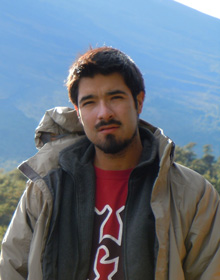
José M. Yáñez obtained his doctor of veterinary medicine degree (DVM) and his PhD degree from the University of Chile in 2006 and 2011, respectively. During 2009 and 2010, Yáñez joined, as a visiting PhD student, William Davidson’s laboratory at Simon Fraser University, Canada. Between 2011 and 2013, Yáñez held the position of R&D laboratory manager at Aquainnovo, a Chilean salmon and tilapia breeding company. Recently, Yáñez has been involved as principal investigator and director of six competitive grants aimed at the incorporation of molecular information into genetic improvement programs to improve disease resistance traits in aquaculture species. In addition, he is also participating as co-researcher in projects funded by Brazil, Canada, and the United Kingdom. Since January 2014, Yáñez joined the Faculty of Veterinary and Animal Sciences of the University of Chile as an assistant professor. From here, Yáñez is leading a research group devoted to aquaculture genetics and genomics research, which currently is mainly focused on exploiting genomic information to implement and enhance new strategies to sustainably improve aquaculture production by means of selective breeding.
Mark Tizard
Genome Edited Farm Animals: Pest-off: Could gene drive help drive out Australia's invasive pest animals
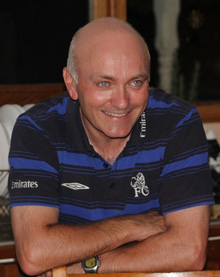
Mark Tizard is a senior scientist in genome engineering at CSIRO’s Australian Animal Health Laboratory. He began his career in the United Kingdom in the early days of gene cloning as part of the team that was first to identify and produce the malaria merozoite major surface antigen for vaccine studies (Holder et al., 1984, Nature). He came to Australia and CSIRO following the postdoctoral work in mycobacterial research with relevance to Australia (in Johne’s disease) in which he identified, characterized, and developed a unique marker for the disease-causing agent. Changes in CSIRO gave him the opportunity to explore the emerging field of RNA interference and microRNA biology. His group was the first to catalogue the microRNA repertoire of the chicken (Glasov et al., 2009, Genome Research), a model system in which he later developed a novel approach for RNAi delivery by minimal transgene. This involved developing and applying tools from another emerging field—gene editing. Improvements in these techniques from his laboratory have led to very efficient methods to edit the chicken genome, one spin-off of which is a new method to remove males from the egg-layer industry without having to hatch and cull day-old chicks (the current practice), though it is yet to go into industry practice. With the advent of CRISPR/Cas9 technology, the ease of applying gene editing in poultry led Tizard to broaden his horizons and to look at how these techniques might be applied in the genetic control of vertebrate pests. His current interests are gene editing in the cane toad and exploring the possibilities of the new gene drive technology for fish and rodent pests.
